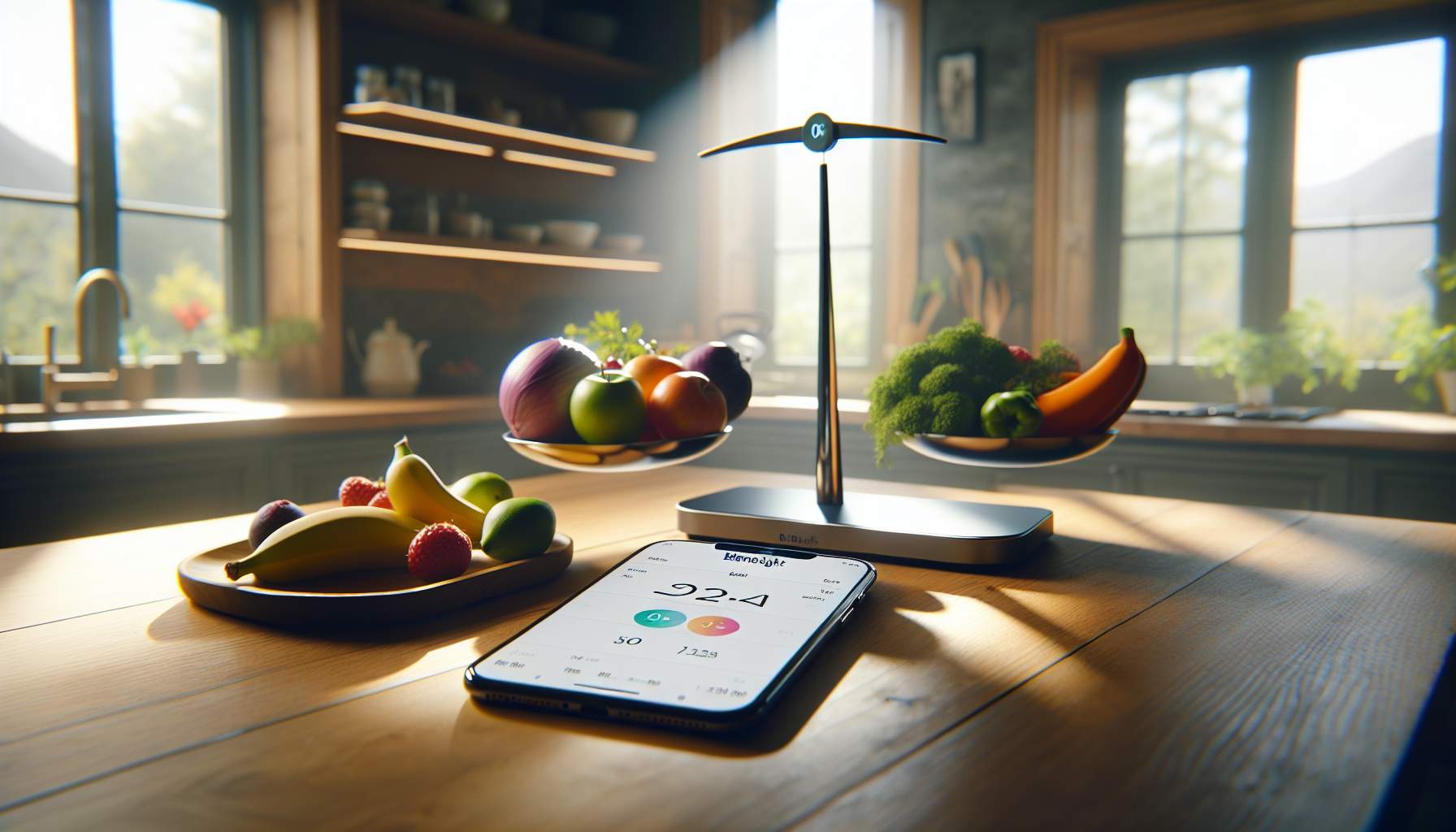Biomesight stands at the forefront of health innovation, harnessing artificial intelligence to shed light on our well-being through the lens of our gut’s ecosystem. At its helm, Rose Walbrugh brings her vision to life, emphasizing the critical role a balanced gut microbiome plays in overall health. By introducing a method for detailed examination and continual monitoring of this complex system, she opens up new possibilities for enhancing human health on a global scale. Through such pioneering efforts, Biomesight aims not just to inform but to transform how we understand and manage our well-being for better lives worldwide.
What led to the creation of Biomesight?
My journey into the world of microbiome testing began from a very personal place, battling gut issues myself. In seeking solutions, I turned to a company known as uBiome, which specialized in monitoring and analyzing one’s gut health over time. However, when uBiome unexpectedly went under, it left many of us without the tools and community support we had come to rely on. Recognizing the void left by their absence, and spurred on by the encouragement of a dedicated online community, I embarked on creating a web application that aimed at picking up where uBiome left off. Launched in 2019, this platform allows users to upload their existing data for continued insights into their gut health.
As our user base grew, it became evident that many were grappling with health concerns directly linked to their gut microbiomes. To address this need more comprehensively, we introduced features enabling users to connect with healthcare practitioners for personalized guidance. This addition wasn’t just about providing expert advice; it was about empowering individuals to take control of their health journeys through informed decisions.
Moreover, recognizing the crucial role social proof plays in decision-making processes around healthcare choices led us toward introducing practitioner reviews and ratings. This step was crucial in building trust and helping our users make informed decisions about whom they choose to guide them on their path towards better health.
Beyond addressing specific gut-related concerns, Biomesight broadens its utility by offering insights into general wellness impacts stemming from diet through intolerance and allergy tests. These tests go beyond identifying what foods might be harmful by highlighting those beneficial for one’s digestive system.
One exciting frontier we’re exploring is continuous glucose monitoring (CGM) via wearable technology. CGM promises deeper insights into how individual food choices impact blood sugar levels throughout the day – not just immediately after eating but over several hours thereafter.
Our focus remains steadfastly centered on refining our personalized recommendations based entirely upon cutting-edge research – believing firmly that therein lies our greatest value proposition for our customers.
Understanding and Testing the Microbiome
Our bodies are bustling ecosystems, hosting a diverse community of tiny inhabitants ranging from bacteria and viruses to fungi. This complex network, known as the microbiome, isn’t just confined to our digestive tracts; it extends to our skin, saliva, and various other body parts. However, the gut microbiome steals the spotlight due to its significant influence on our overall health. It’s a one-way street – what happens in your gut doesn’t just stay there; it can affect your entire body.
In light of this, while we could examine microbes living on your skin or in your mouth, zeroing in on those residing in your gut offers us a more meaningful glimpse into your health. That’s where 16S sequencing technology comes into play. This cutting-edge tool has revolutionized how we peek into the microscopic world within us. By analyzing a simple stool sample, we gain insights into the vast universe of microorganisms inhabiting your large intestine.
So why is this important? Understanding the makeup of your gut microbiome can unlock doors to improving not only digestive health but overall well-being. It’s about getting up close and personal with the unseen forces that silently shape our lives every day.
Factors Contributing to a Balanced Gut Microbiome
It’s an intriguing inquiry, one that unfortunately isn’t covered in the curriculum of medical schools. The essence lies in maintaining a delicate equilibrium among various microbes residing in our digestive system. Interestingly, certain critical species exert a significant influence on this microbial community, even in minimal amounts.
At Biomesight, we adopt specific guidelines for numerous essential bacteria as determined by Dr. Jason Hawrelak, a pioneer in this domain. These guidelines cater to probiotics, friendly bacteria, and potentially harmful ones known as pathobionts. We then evaluate your microbiome’s balance and diversity, providing you with a comprehensive score to understand where you stand. This approach not only sheds light on the importance of gut health but also emphasizes the crucial role these microscopic entities play in our overall well-being.
What information is included in your reports?

Upon first accessing your data through Biomesight, you’re greeted with a comprehensive wellness score that reflects the health of your gut. This score is dissected into 12 distinct areas, each contributing to the overall picture of your digestive ecosystem’s equilibrium. The color-coded system—ranging from red to green—quickly informs you about which aspects of your gut flora require attention.
Delving deeper, Biomesight unveils an intricate landscape of microbes residing within you. It not only identifies these tiny inhabitants but also elucidates their roles and prevalence within an average gut environment. For those who crave detail, there’s even an option to examine specific bacterial species and how they measure up against established healthy ranges.
The platform doesn’t shy away from complexity, offering insights into the end products of bacterial metabolism like short-chain fatty acids and various toxins such as hydrogen sulfide and methane. These sections are invaluable for understanding how bacteria influence bodily functions beyond digestion.
A particularly appreciated feature among users is the ability to track changes over time, especially when experimenting with dietary adjustments or new supplements. Observing shifts in one’s microbial community provides concrete feedback on lifestyle choices’ efficacy.
Notably, Biomesight tackles topics often overlooked by similar tests, such as neurotransmitter production by gut bacteria and dietary intolerances—a godsend for those grappling with food sensitivities. For instance, it sheds light on lactose intolerance from a microbial perspective, offering hope for those affected through targeted improvements in their gut flora.
Moreover, the service is pioneering research into connections between certain microbiome profiles and autoimmune skin issues by focusing on bacteria involved in oxalate degradation—an area ripe for exploration given its potential implications for inflammatory conditions.
For a more thorough understanding of what Biomesight‘s detailed reports can offer—and possibly discover something life-changing about your own health—it’s highly recommended to check out their explanatory video.
How are gut bacteria and genetic testing related?
When we talk about what makes us similar, it often boils down to the enzymes we can produce. Specifically, our focus shifts to our gut health and how beneficial microbes aid in certain functions. A key point of interest is oxalates; without our gut bacteria, handling them would be impossible since humans lack the necessary enzymes for this task.
Your genetic makeup is constant and unchanging. However, with advancements in science, tests now exist that reveal the degree to which specific genes are expressed, though results may vary. Interestingly, some individuals exhibit an incredibly consistent gut microbiome over time. This consistency remains unaffected by dietary changes from one extreme to another. Therefore, unless you’re deliberately altering your diet with prebiotics and probiotics, your gut environment likely maintains its stability well into adulthood.
This understanding underscores the significant role of microbial inhabitants in our digestive systems and highlights the importance of dietary inputs designed to nurture a healthy microbiota landscape within us.
How do doctors utilize microbiome information?
Healthcare providers who embrace a holistic approach are increasingly turning to Biomesight to delve into the underlying causes of patients’ health concerns. This tool is particularly favored by professionals and researchers with expertise in studying the microbiome, which plays a crucial role in our overall health.
Today’s conventional medical practices have yet to fully adopt microbiome testing, although there’s ongoing research in this field. It’s not rare for patients undergoing numerous traditional tests, including some that are quite invasive, to end up without any conclusive diagnosis. This scenario highlights an overlooked opportunity: a straightforward microbiome test often holds the key to identifying hidden imbalances affecting one’s well-being.
The significance of understanding our body’s microbial community cannot be understated and it’s poised to gain widespread recognition over the next decade. As awareness grows about its critical link to health, embracing microbiome analysis could lead us towards more effective and less invasive diagnostic processes.
What current trends and technologies interest you the most?
The future holds immense promise as businesses begin to merge various data pools. This trend is not just emerging; it’s unfolding right before our eyes. Integrating areas of expertise that are traditionally viewed in isolation presents a complex challenge but promises revolutionary benefits. Consider the impact on healthcare: analyzing an individual’s DNA or microbiome offers valuable insights, yet it’s only a piece of the puzzle. The real magic happens when we combine these insights, providing a comprehensive understanding of a person’s health.
This holistic approach doesn’t just benefit medical professionals; it empowers patients too. With a more complete picture of their health, individuals can make informed decisions and understand their conditions in depth, potentially leading to better outcomes and improved quality of life.
In essence, the synergy of disparate data sets marks a turning point in how we tackle complex issues. It underscores the importance of looking at the big picture rather than getting lost in specific details—providing clarity and context that was previously out of reach. As this practice becomes more common, we stand on the brink of unlocking untold possibilities for personal and societal advancements.
What do you intend to do next with BiomeSight?
We’re in the midst of developing an innovative tool named the Cohort Analyzer. This feature is designed to empower users by giving them the ability to filter and select specific groups based on various criteria such as health conditions, symptoms, age, among other factors detailed in their health profiles. The idea is to allow you to pinpoint exactly how many individuals fall within your chosen group.
Furthermore, there’s a separate group known as the control cohort – essentially people who don’t fit into your selected group. By comparing these two groups with the help of artificial intelligence (AI), we aim to highlight significant differences that stand out between them.
This tool isn’t just for anyone; it particularly benefits researchers looking to uncover connections between different factors. Imagine being able to select a set number of individuals dealing with anxiety or depression and then drilling down into common patterns in gut bacteria among them. It’s this kind of targeted analysis that can be groundbreaking.
We’re buzzing with excitement over rolling this out within the next few months and cannot wait to dive deep into discussions with those in the scientific arena about its potential impacts and uses.


















